By Dr. Krystal White, Ph.D
Go to www.thelettercode.com/resources to take the quiz and find out what YOUR letter is.
You know the feeling of being completely yourself, unencumbered and free. It feels like a peaceful contentment. We all want relationships, especially romantic partnerships, where we can be intimately and positively connected to our significant others and be our true selves at the same time. We need to find our own centers to achieve this dynamic. Feeling successful in our relationships is reliant on our ability to uncover and respond to our hidden core love needs.
If you’re like me, you live in a complicated world and find yourself to be rather complicated, too. Being “authentic” is not as easy as it sounds. You need to shift through lots of detail on the surface to quickly get to the simple, real you underneath all the roles, responsibilities, and rules you have adopted. Your letter code is a hack for deciphering all this superficial stuff to get to the most essential way you genuinely connect with your significant others.
Your letter code reveals the basic need you are seeking to fulfill in love—and have been all your life—although you may not have known it. It dictates how you fundamentally relate to your romantic partners and explains the reason why. Everybody has a combination of needs that, when met, facilitate them in clicking with their partner. The love connection just flows when this occurs.
You know this clicking when you feel it. It happens when you are loving from your real code and not a false one. Staying close to your code— your real center of love—will quickly reduce how much effort you put forth to connect, and it will increase your experience of being in the right place to feel love.
In this book, you will be guided to classify your behavior, feelings, and thoughts into their most essential form. Knowing our codes helps us quickly translate and communicate our real selves to the significant others we’d like to love better.
People have only one of four main romantic love profiles that explains their patterns of connectivity. The needs that underlie each of these profiles are recognizable and easy to understand. The four letter codes represent essential patterns of thought, feeling, and actions. These are expressed in how emotionally close or distant people like to be in relationship with their significant others. They also help us decipher the degree to which we seek either autonomy or support from them.
Under different circumstances, some people need either to move emotionally closer to their partners or emotionally away from their partners. Other people don’t need to move at all, needing instead to remain grounded, while either standing together or standing apart. Each of these four behavioral styles conveys how people achieve connectivity with their significant others.
In this book, I’m giving you a quick tool for understanding the four main types of psychological needs driving how we love. Without psychobabble or spending time trying to deduce the origins of your profile, I’m going to give you quick, user-friendly information on how much support, togetherness, groundedness, and separation you naturally need in your love life to click with a partner.
How to feel fulfilled, happy, and aligned with a significant other may have been hidden to you up to now. But I want you to be able to see the real you in love. Knowing your letter code has the potential to powerfully change the way you love from here on out.
You Get the Picture
Consider the body language when two people approach one another in greeting. Some people lean in, some people stand upright, and some lean away. Some people even want to be so close that they are practically standing on top of one another.
These physical patterns are like the lines making up letters in an alphabet. Imagine that each person’s body is a straight line. Lines join together to make a letter, just as two adults connect together to form a couple. Being able to read the letters is a hack that can help you quickly understand yourself.
It is not possible to accurately discern anybody’s relationship needs purely from observing the way he or she approaches others. What you see is not what you get. But you can decipher your own core needs in a relationship by examining what’s beneath your patterns of feeling, thinking, wanting, and behaving in love.
The reason to do this is because you can’t change what you can’t see. Once you can see your letter code, you’ll be more effective in connecting with others while being the real you.
The Different Ways We Touch
Looking at how the lines of our energy and behavior touch and connect reveals commonalities and differences in our core needs in relationship.
Leaning In
Some people need to lean into a relationship, wanting to establish a mutually supportive connection. If this feels right for you, you want not only to assist your partner, but to also lift her up emotionally. You want both of you to be there to help each other when vulnerable, and receive a significant degree of support from the connection. Without this consistent support, you will feel that something just isn’t right. You may feel slight unease, disappointment, or frustration—perhaps assuming that you are being taken for granted or mistreated. Or you could feel self-judgmental, becoming dissatisfied with yourself for not being enough or doing well enough to have earned and received the support you wanted.
You may be a person who naturally needs a significant degree of emotional vulnerability. You appreciate it when you are needed; and if you are being honest with yourself, you like it when you can trust it is safe for you to need someone. Getting this need met provides you with an essential sense of stability.
Leaning Back
Some people need to lean back from a relationship, wanting to diverge from their significant others. If this sounds like you, there are times when you will seek to go into a completely different direction from your significant other. You need periodic diversion away from being a couple in order to feel satisfied. Leaning away occasionally, or even frequently, gives you space to reflect on your own life, to feel more gratitude for the relationship, and to bring vitality and renewed passion back to your relationship.
If your partner does not like or genuinely value this type of leaning away, you may feel frustrated, ashamed, or guilty of your desire. You may establish destructive habits to gain this freedom or to repress your need for it. Neither is an ideal solution. By contrast, if you can lovingly express your need to have separate experiences and your partner is willing to embrace your need, as a couple you may discover that adventures external to your partnership actually brings integrity to the relationship.
Standing Side by Side
Some people feel a need to be grounded and upright. They prefer to touch in ways where each person isn’t required to lean in to connect. They prefer to stand side by side in love. If this sounds like you, you tend to find purpose in maintaining a solid, rooted foundation. You feel fulfilled by being steadfast in your commitments, and you value a strong work ethic. You view relationships as partnerships where two people care about each other’s wellbeing and take responsibility for themselves as well. It feels important to you to see eye to eye with your partner and to function as equals.
Reaching Out
Some people are looking for companionship from their significant others. Companionship provides a bridge of connection between otherwise separate entities. If you deeply appreciate it when your partner reaches out to you in reciprocity to enjoy common interests, tasks/projects, activities, and experiences, this may be your preferred dynamic. Sharing and collaborating is a link to your significant other that provides a clear way for you to enhance your mutual pleasure.
Focus on Yourself First
In the next four chapters, you’re going to learn how to decipher your personal letter code and hidden relationship needs. It doesn’t matter if you are in a long-term relationship, such as a marriage, or if you are only casually dating right now. In either case, you have built-in, natural ways of joining your life with a person you genuinely want to love. Once you know your core need and can more easily see it behind your thoughts, emotions, and actions, then you can start to build (or rebuild) your love life from a foundation of empowered awareness rather than false interpretations.
Each letter code visually represents the type of relationship a person is either consciously or unconsciously trying to create according to his or her personal motivation. Understand your letter code and you’ll be clued in about your innermost need.
Beware! Trying to guess your significant other’s letter code could lead to disconnection. Remember, these needs are mostly hidden from us. We can spend many years superficially reading our relationships one way, while the truth of what we need is completely the opposite. You’ll get much better results if you work on deciphering your own motivation first before you try to guide your significant partner to decode his/her own needs.
Focus on yourself. That often serves as a powerful tool to influence others to do the same.
—
KRYSTAL WHITE, Ph.D., is a leadership psychologist with more than 15 years of experience working with individuals, organizations, and communities.
Dr. White holds a doctorate in clinical psychology, is a board certified child and adolescent psychologist, and has completed a medical fellowship at Madigan Army Medical Center in developmental pediatric psychology. She also holds a master’s degree in Christian Leadership from Fuller Theological Seminary, and a master’s degree in mind, brain, and education from Harvard University.
For more information, please visit www.thelettercode.com and www.drkrystalwhite.com or connect with Dr. White on Instagram and LinkedIn.
The Letter Code is available on Amazon, www.thelettercode.com, and wherever books are sold.










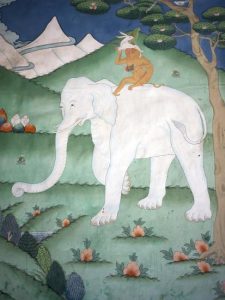
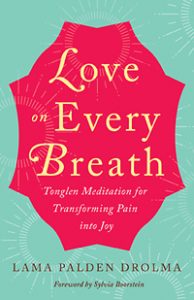 An excerpt from LOVE ON EVERY BREATH by Lama Palden Drolma
An excerpt from LOVE ON EVERY BREATH by Lama Palden Drolma Lama Palden Drolma is the author of Love on Every Breath. A licensed psychotherapist, spiritual teacher, and coach, she has studied Buddhism in the Himalayas with some of the most preeminent Tibetan masters of the twentieth century. Following a traditional three-year retreat under his guidance, Kalu Rinpoche authorized her to become one of the first Western lamas. She subsequently founded the Sukhasiddhi Foundation, a Tibetan Buddhist teaching center in Fairfax, California. Visit her online at
Lama Palden Drolma is the author of Love on Every Breath. A licensed psychotherapist, spiritual teacher, and coach, she has studied Buddhism in the Himalayas with some of the most preeminent Tibetan masters of the twentieth century. Following a traditional three-year retreat under his guidance, Kalu Rinpoche authorized her to become one of the first Western lamas. She subsequently founded the Sukhasiddhi Foundation, a Tibetan Buddhist teaching center in Fairfax, California. Visit her online at 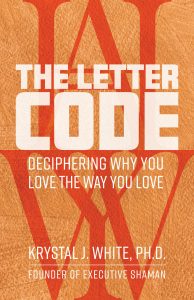 An excerpt taking from The Letter Code:
An excerpt taking from The Letter Code: 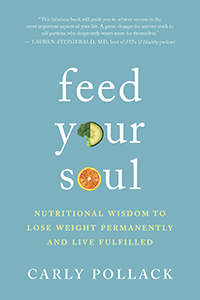 There are countless diets, cleanses, and 30-day challenges all geared to help people lose weight, heal their digestion, and feel more energy. Yet, these temporary protocols fall short when it comes to true transformation. With all of the nutrition guidance available, why do millions of people weigh more than they want and feel anxious and depressed about it?
There are countless diets, cleanses, and 30-day challenges all geared to help people lose weight, heal their digestion, and feel more energy. Yet, these temporary protocols fall short when it comes to true transformation. With all of the nutrition guidance available, why do millions of people weigh more than they want and feel anxious and depressed about it? Carly Pollack is the author of Feed Your Soul and is the founder of Nutritional Wisdom, a thriving private practice based in Austin, Texas. A Certified Clinical Nutritionist with a master’s degree in holistic nutrition, Carly has been awarded Best Nutritionist in Austin five years running and has helped over 10,000 people achieve their health and happiness goals. Visit her online at www.carlypollack.com
Carly Pollack is the author of Feed Your Soul and is the founder of Nutritional Wisdom, a thriving private practice based in Austin, Texas. A Certified Clinical Nutritionist with a master’s degree in holistic nutrition, Carly has been awarded Best Nutritionist in Austin five years running and has helped over 10,000 people achieve their health and happiness goals. Visit her online at www.carlypollack.com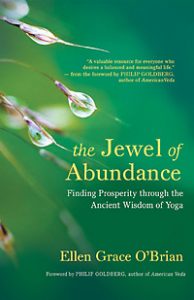 An excerpt from The Jewel of Abundance by Ellen Grace O’Brian
An excerpt from The Jewel of Abundance by Ellen Grace O’Brian Ellen Grace O’Brian is the author of
Ellen Grace O’Brian is the author of 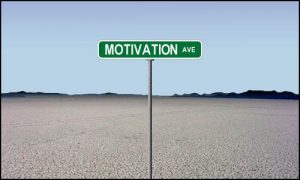
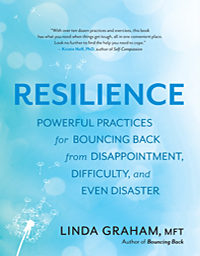 An excerpt from Resilience by Linda Graham
An excerpt from Resilience by Linda Graham Linda Graham, MFT, is the author of Resilience and also Bouncing Back, the winner of a 2013 Books for a Better Life Award. She is an experienced psychotherapist who integrates modern neuroscience, mindfulness practices, and relational psychology in her international trainings on resilience and well-being. Visit her online at www.lindagraham-mft.net.
Linda Graham, MFT, is the author of Resilience and also Bouncing Back, the winner of a 2013 Books for a Better Life Award. She is an experienced psychotherapist who integrates modern neuroscience, mindfulness practices, and relational psychology in her international trainings on resilience and well-being. Visit her online at www.lindagraham-mft.net.